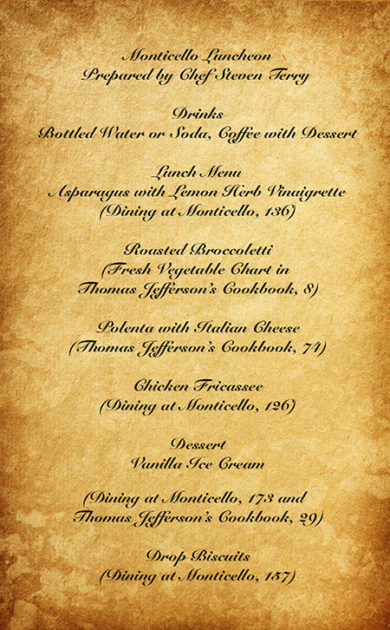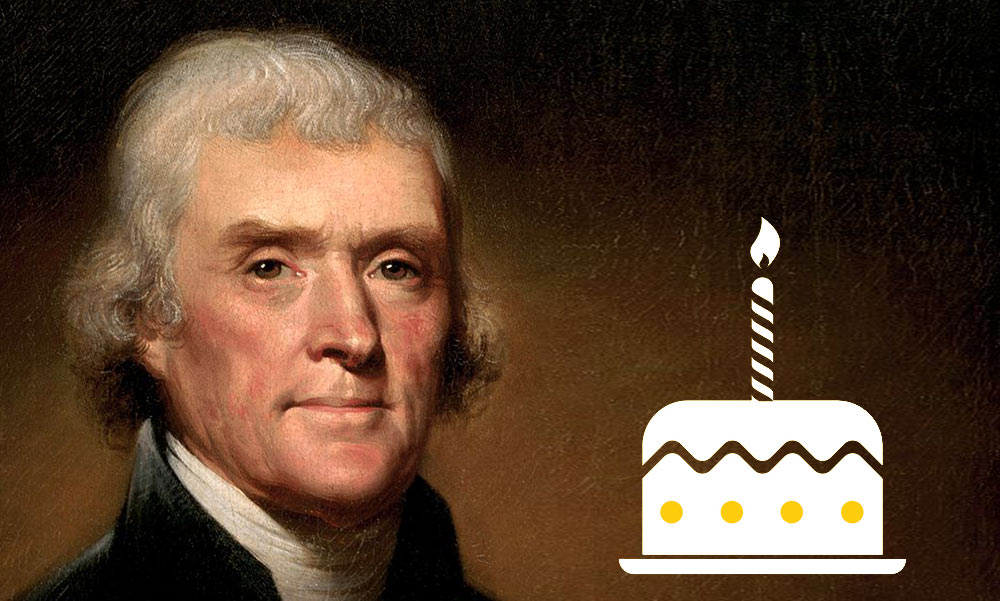 Today, Thomas Jefferson would have been 274 years old. Time for a feast.
Today, Thomas Jefferson would have been 274 years old. Time for a feast.
The author of the Declaration of Independence and the third U.S. president, Jefferson is also known for his culinary predilections. It’s this latter aspect of Jefferson that University of Rochester historian Thomas Slaughter is celebrating with his students in the course History of Eating and Food.
“Monticello meals were not typical of American cuisine,” says the Arthur R. Miller Professor of History. “Jefferson was a Francophile and gourmand, who sought recipes and ingredients from Europe. He even had one of his slaves trained as a pastry chef in Paris.”
To mark Jefferson’s birthday, the class is in for a rare treat: a historically accurate lunch, culled from the actual Monticello cuisine.
Prepared by local chef Steven Terry of Root Catering, the luncheon features some of Jefferson’s favorite vegetables, such as asparagus and the modern update broccoletti, followed by chicken fricassee, polenta with Italian cheese, and drop biscuits—all recipes taken directly from Thomas Jefferson’s Cookbook and Dining at Monticello.
Adapting the recipes while maintaining historical accuracy, Terry says, proved a challenge. “Early on I struggled with the idea of using my modern range and oven to make a historical meal, but then the challenges of working with historically accurate cooking devices made it [modern kitchen technology] an obvious and necessary choice,” says Terry.
Rather than describe in the classroom what a meal some 250 years ago would have tasted like, Slaughter wanted his 25 students to experience one. “The flavoring of the food is entirely different. Jefferson would have things like French puff pastry, ice cream, and other foods with which they are familiar, but it tastes nothing like what the students expect,” says Slaughter.
Jefferson’s ingredients were locally sourced and in-season, and the dishes had a much lower salt, protein, and sugar content than Americans are accustomed to today. “If we give you one of Jefferson’s French puff pastries, the cream inside tastes like cream. It doesn’t taste like sugar,” says Slaughter.
Clearly, over the course of two centuries our taste buds have changed: “To our tongues, we don’t experience salty or sweet unless they are heavily sweetened or heavily salted by comparison to that era,” says Slaughter.
Chef Terry agrees: “We either have different sensibilities from Jefferson, or they knew some secret methodology that escapes me.”
His students’ verdict?
“Less of a richer flavor, but I think we’ve just become accustomed to that,” says Anna Alden ’17 from Victor, NY, who describes the meal as “fresher” and “more natural” tasting.
“A little more simple,” adds fellow student Ben Weinstein ’17 from Boston. “There’s not as many complicated things, you can sort of taste everything individually.”
The private event at Rush Rhees Library was sponsored by the University’s Rochester Center for Community Leadership (RCCL).





